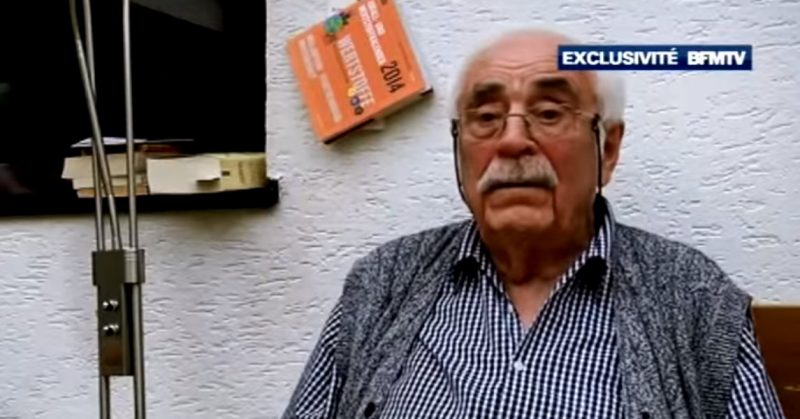In 1944, Nazi troops surrounded the French village of Oradour-sur-Glane and slaughtered all but seven villagers. Werner Christukat was one of those soldiers. He needs to confess.
An Open Letter to Werner Christukat, Waffen-SS soldier and participant in the massacre at Oradour-sur-Glane:
My grandfather was a U.S. airman shot down over occupied France during World War II. He traveled the countryside for months, evading German patrols. In a declassified intelligence report, he painfully recalls, “I saw a town within four hours bicycle ride up the Gerbeau farm where some 500 men, women, and children had been murdered by the Germans. I saw one baby who had been crucified.”
This crime is likely one that you know well—the massacre at Oradour-sur-Glane.
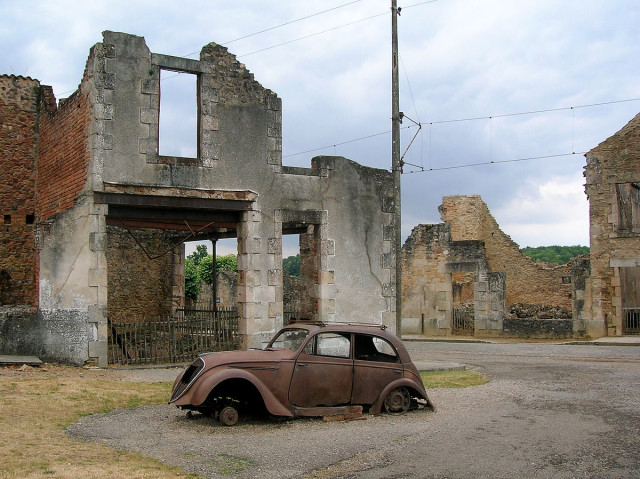
Source: TwoWings
In June of last year, a court in Cologne, Germany ignored relevant legal precedent and dismissed your case. One of Hitler’s most elite combat soldiers, you were charged with murdering 25 defenseless men in Oradour, as well as helping to burn alive hundreds of women and children.
For decades, Waffen-SS soldiers have avoided responsibility for their horrific wartime acts. In 2011, however, the legal landscape in Germany suddenly shifted. The trial of a guard from Sobibor extermination camp ushered in a new era of Nazi prosecutions, including that of Reinhold Hanning, who just this past Friday was convicted of 170,000 counts of accessory to murder.
As a matter of law, it is no longer necessary to prove direct involvement in a specific killing. Rather, all that is required is a showing that you were part of a larger killing apparatus, or a cog in machinery designed entirely for the purpose of murder. In other words, mere presence and support are enough to establish guilt. Yet somehow you remain free.
On June 10, 1944, the 2nd SS Panzer Division “Das Reich” descended upon Oradour. As your convoy approached, an officer was heard instructing his men, “Today, blood must flow.” They surrounded the village with military precision. The more experienced soldiers had learned their craft on the eastern front, where mass murder was a frequent tool of occupation.
The first shots rang out as rifle and machine gun fire struck down villagers working in the fields. Once the village was encircled, it was clear that the men in the cordon had no intention of stopping innocent civilians from entering. Rather, their goal was to ensure that no one could escape the slaughter to come. The noose was beginning to tighten.
Halftracks loaded with combat-ready troops charged through the heart of Oradour. A systematic roundup commenced, with every soldier directing men, women, and children to the village fairground. The SS went house to house, pushing citizens into the streets, shooting the old and infirm in their beds.
Camouflaged soldiers burst into the schools shouting, “Alle raus!” Children diligently followed their teachers as they were led away. One terrified boy waited behind. He called out to his sisters and then sprinted from the classroom.
At seven years old, Roger Godfrin was the only child to survive the massacre.
The fairground overflowed as all the villagers assembled. Women carried their babies and pushed them in carriages, boys and girls were crying next to their teachers, men stood by in stunned silence. The SS divided them into two groups. Women and children were marched off to the church. Men were forced into six other buildings.
At a nearby barn, soldiers laughed openly before settling in behind their machine guns. The men from the village huddled together inside. When the signal was given, the killing began in earnest. Gunners raked their fire back and forth as the Frenchmen fell in twisted piles of blood and broken limbs. A handful of survivors felt soldiers climbing on their backs. They lay motionless, feigning death, as pistol shots silenced those screaming around them. The building was then set on fire. One man struggled to free himself from the corpses as the flames licked at his flesh. In the distance, he could hear an unnerving sound. The soldiers were playing music.
Robert Hebras escaped the killing machine that day, along with only four other men.
Inside the church, the SS laid down a large box at the front of the nave. The women and children looked on nervously. When the bomb exploded, it filled the air with thick black smoke. Gunners rushed in, throwing grenades and spraying the crowd with bullets. Mothers fell dead in front of their babies. Children ran screaming, their clothes engulfed in flames. The SS stoked the fire, piling broken pews and straw on top of the bodies. Behind the altar, one woman pulled herself to her feet. With her last ounce of strength, she clawed her way up to a window and jumped.
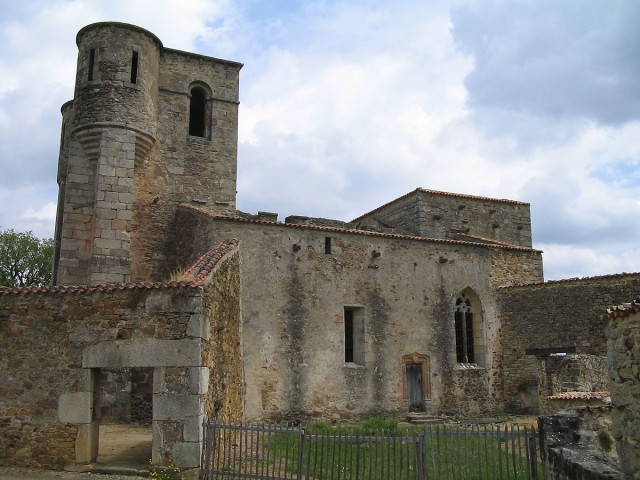
Marguerite Rouffanche was the only woman to survive, fighting her way free from the red-hot crematorium inside the church
The bulk of the killing complete, soldiers took to the streets, firebombing the remaining buildings and hunting for survivors. Corpses were found in nearby fields and thrown down a well. Investigators would later discover the body of a baby shoved inside the baker’s oven.
Of the 642 people murdered, more than 200 of the victims were children. It was the largest mass killing in occupied France during the war.
After your unit withdrew, rescue workers were met with a scene of unconscionable cruelty. Within the church, a thick paste of human remains flowed across the floor. Boys and girls were crushed against the perimeter, their faces no longer recognizable. Attempting to escape the intense heat, they left melted flesh glued to the walls. In a side chapel, baby carriages sat riddled with shrapnel. Protected by their heavy prams, the infants inside may have been the last to scream as the fire overtook them.
In 2010, Nazi hunters located a document in the archives of the Stasi, the former East German secret police. It was a company list for the Das Reich Division that included your name alongside other known perpetrators of the massacre.
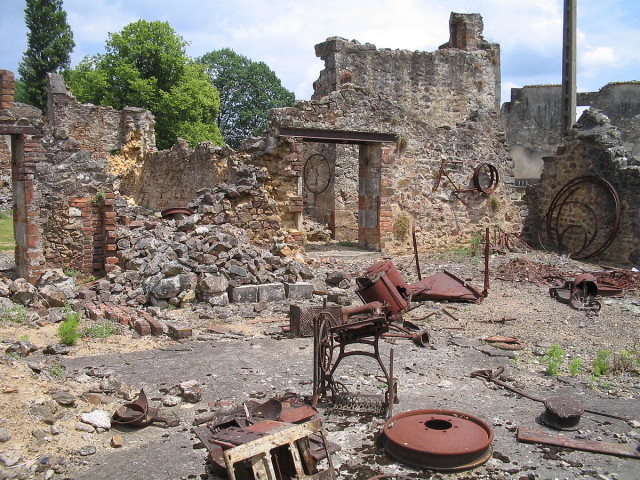
When questioned by German prosecutors and journalists, you made a series of admissions. You acknowledged that you were a machine gunner and that you were present at Oradour. You were part of the cordon that sealed off the perimeter, preventing the villagers from escaping. More importantly, your duties brought you into the center of the village where you saw the bomb placed inside the church. You even admitted that you were close enough to hear the women and children scream as they met their horrible fate. Nonetheless, you denied all responsibility for the crime.
I have lost myself in this at times, running through the events again and again, dreaming of the children. These most innocent victims should never be forgotten. They are not insignificant.
On that day in Oradour, you and the soldiers alongside you were energetic executioners. You made hell on earth possible. The killing was synchronized. It was mass murder to music, and there were only seven survivors. As the cordon pushed in toward the church, each soldier became a complicit piece in the larger killing machine. Even the men on the perimeter ensured that no one could escape. It was a systematic attempt to exterminate a village. Just the day prior, men from your division hanged 99 civilians in a nearby town. Their corpses dangled from lampposts and balconies as SS officers listened to music on a gramophone.
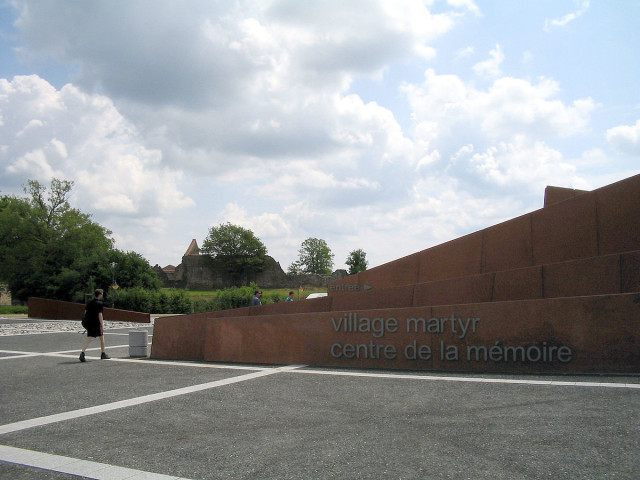
These are horrific crimes with no statute of limitations. The need for justice remains powerful, but my intent in writing this letter is not to demand that you stand trial. Rather, I am asking you to do something far more difficult.
Prove your humanity. Confess everything you did that day and everything you saw. Apologize to the last living survivors for causing them such tremendous pain.
Your time in this world is growing short. Doing anything else at this late hour would only confirm what I have thought all along. You are a monster.
McKay Smith is an attorney with the U.S. Department of Justice, National Security Division. He is also an adjunct professor at the George Washington University Law School and the George Mason University School of Law where he teaches courses on government oversight and internal investigations. Prior to joining the Department of Justice, Smith was a senior inspector with the Department of Homeland Security, Office of Inspector General. The views expressed in this article are those of the author and do not necessarily represent the views of the Department of Justice or the United States.
